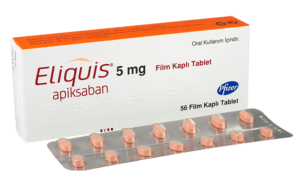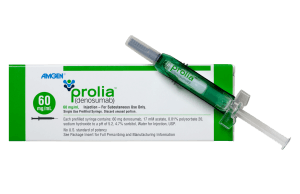
This happens in people with type 1, type 2, and gestational diabetes. It is caused by natural changes in hormone levels during the night, which the bodies of people with diabetes cannot respond to properly. There are a variety of strategies that people can try to deal with their early-morning surges in blood glucose. These might include natural approaches, like adjusting their diet and exercise routines, or making changes to their medications, especially how they use insulin.
What causes early-morning surges in blood glucose?
The dawn phenomenon is the result of overnight changes in hormone levels. During the night, the body releases hormones like growth hormone, adrenaline, cortisol, and glucagon. These hormones make it harder for insulin to work properly, which causes these early-morning surges in blood glucose.
At night, the liver does two things that may release more glucose into the bloodstream. The first is called glycogenolysis, where glucose already stored in the liver is broken down and released. The second is gluconeogenesis, where the liver makes new glucose from parts of protein or fat.
Just before dawn, there is a small, transient increase in insulin released by the pituitary gland in people without diabetes. This extra insulin helps counteract the release of glucose and prevents blood sugar from getting too high. This helps to keep blood sugar levels steady and stable throughout the night. In people with diabetes, the pituitary gland may not be functioning properly, so it cannot do this, and blood sugar levels can rise by about 15–25 mg/dL from their lowest point during the night to just before breakfast. This is roughly equivalent to eating about half a tub of non-diet ice cream or a medium-sized bar of sweet chocolate.
The rise in morning blood sugar levels also impacts overall daily glucose levels and A1C readings, increasing A1C by an average of 0.39% (4.3 mmol/mol), regardless of the type of treatment used. Studies suggest that more than half of people with diabetes experience this to some degree.
How is the dawn phenomenon treated?
Oral diabetic medications are not very effective at controlling the early-morning surge in blood glucose, even when used together. Increasing the dose of sulphonylureas like Amaryl can cause low blood sugar in the afternoon or evening if the dose is raised too high which makes them potentially dangerous as it can produce hypoglycemia.
Incretins are hormones produced in the gut that help regulate digestion and manage blood sugar levels. Incretin mimetics like Mounjaro and Ozempic are slow-release treatments that use glucagon-like peptide-1 (GLP-1) and glucose-dependent insulinotropic polypeptide (GIP) for managing blood sugar for longer periods, not only after meals. They are approved for managing type 2 diabetes and, in some cases, long-term weight control.
A better solution for early-morning surges in blood glucose is taking a basal insulin like Lantus in the evening. This helps prevent the dawn phenomenon by reducing the liver’s glucose production and fat breakdown, working more like a healthy person’s natural blood sugar regulation.
Basal insulin can be added as a treatment for type 2 diabetes when metformin alone isn’t enough to keep A1C levels below 7.0%.
What are the signs of early-morning surges in blood glucose?
Symptoms of the dawn phenomenon can include feeling tired, being very thirsty, needing to use the bathroom often, having a headache, experiencing body aches, dry eyes, and blurry vision.
How can I check if I am experiencing the dawn phenomenon?
To check for DP, a person can follow a simple testing routine over a few nights. They should test their blood sugar at three key times: before bedtime, in the early morning (around 2:00 a.m. to 4:00 a.m., using an alarm if necessary), and right after waking up. If their blood sugar stays steady from bedtime until the early morning but then increases, it’s likely a sign of early-morning surges in blood glucose.
For those using a continuous glucose monitor (CGM), this test isn’t necessary because the device provides an overnight blood sugar graph that can reveal the same patterns.
Long-term consequences of early-morning surges in blood glucose.

Can you manage early-morning surges in blood glucose with lifestyle changes?
If someone is experiencing the dawn phenomenon, the first thing to do is to talk to their doctor to find ways to manage it better. It’s important to always consult a doctor before making any changes to diabetes medications or insulin levels.
Here are some strategies a doctor may consider:
- Avoid eating too many carbs or sugary snacks before bed.
- Try having meals and snacks with more protein than carbs in the evening.
- Aim for 7-8 hours of sleep each night.
- Drink more water in the evening and skip sugary drinks.
- Eat dinner earlier to give the body more time to process it.
- Start the day with a breakfast lower in carbs to help manage morning blood sugar levels.
- Adjust insulin or diabetes medication doses as needed.
- Add some light exercise before bedtime.
- Consider switching from daily insulin shots to an insulin pump that can adjust doses automatically through the night.
- Change the timing of evening medications.
- Switching to a medication that might be more effective.
Other reasons for high morning blood sugars
The dawn phenomenon is the most common reason for high blood sugar in the morning, but it’s not the only cause. There are other possible reasons why blood sugar levels can rise at the start of the day.
Feet on the floor syndrome
“Feet on the floor syndrome” happens when someone wakes up with normal blood sugar, but their levels go up as they start moving around in the morning, even if they haven’t eaten anything. This often happens because the body releases hormones like glucagon and epinephrine when a person starts moving in the morning. One way to manage this could be to increase their morning insulin dose, or if they don’t use an insulin pump, take a small amount of insulin right after waking up.
The Somogyi effect
The Samogyi effect causes high blood sugar levels in the morning, but it happens for a different reason. This happens more often in people with type 1 diabetes than type 2 because anyone with type 1 diabetes uses insulin from outside their body. It’s this insulin that can cause blood sugar to drop too low during the night. If the insulin lowers blood sugar too much overnight, the body reacts by releasing hormones like glucagon and epinephrine. These hormones raise blood sugar as a way to balance things out, leading to a rebound effect.
To address this, a person could use a continuous glucose monitor (CGM) to check their blood sugar levels during the night and see if they are dropping too low. Lowering the amount of insulin given for dinner or reducing the overnight insulin levels can help stop this from happening.
Other reasons for high morning blood sugar
High blood sugar levels in the morning can also happen from starting new medications, changes in hormones, pregnancy, insulin resistance, problems with an insulin pump, stress, not getting enough sleep, or a mistake in calculating the evening insulin dose. A CGM should also be checked to see if it is faulty and gives an inaccurate reading.
When to seek care
High blood sugar in the morning isn’t more dangerous than high blood sugar at other times of the day, so signs of early-morning surges in blood glucose don’t usually require emergency care. However, if it keeps happening, it can increase the risk of long-term diabetes complications. The National Institute of Diabetes and Digestive and Kidney Diseases (NIDDK) suggests seeing a doctor or endocrinologist if someone’s morning blood sugar is high more than three times in two weeks. A doctor can help figure out the cause and recommend changes to their lifestyle, medication, or overall diabetes plan.
FAQs
Can early-morning surges in blood glucose be serious?
Research shows that keeping A1C levels below 7% can help people with diabetes lower their risk of complications. The dawn phenomenon, in which blood sugar levels rise in the early morning, can be a long-term problem. If it isn’t managed, it can lead to high blood sugar for several hours each day.
What brings down blood sugar immediately?
The quickest way to lower blood sugar is by using fast-acting insulin. Exercise can also help reduce blood sugar levels quickly. While changes to diet and lifestyle are important for long-term blood sugar control, immediate action might require medication or help from a doctor.
Does coffee spike insulin?
People with diabetes might notice that caffeine changes how their body handles insulin, which could cause their blood sugar to go up or down. For some, drinking about two cups of coffee can lead to this effect, while for others, it might not make much of a difference.
Does walking lower blood sugar immediately?
A new study shows that walking for just two minutes after a meal can help lower blood sugar levels. Even a small amount of movement after eating makes a difference in keeping blood sugar under control.
How do you feel when your blood sugar is too high?
High blood sugar, or hyperglycemia, happens when there is too much glucose in the blood. It can occur in people of all ages and may cause symptoms like feeling very thirsty, hungry, or tired or needing to urinate more often and in larger amounts than normal.
Do normal people experience the dawn phenomenon?
The hormonal changes that trigger the dawn phenomenon happen in everyone, whether they have diabetes or not. The difference is in how the body handles insulin. People without diabetes produce enough insulin and are sensitive to it, which helps keep their blood sugar levels from rising too much in the morning.
















